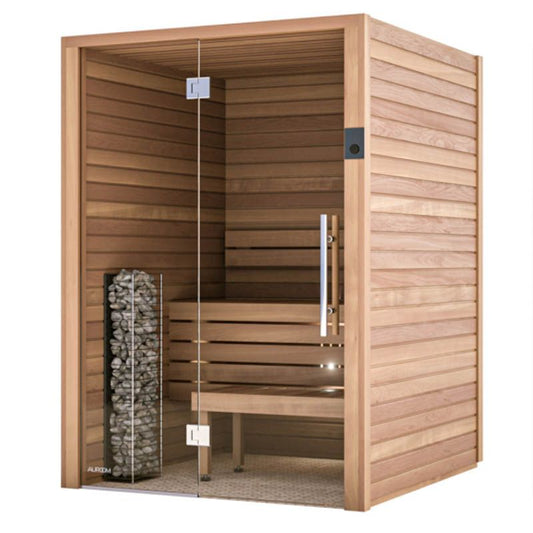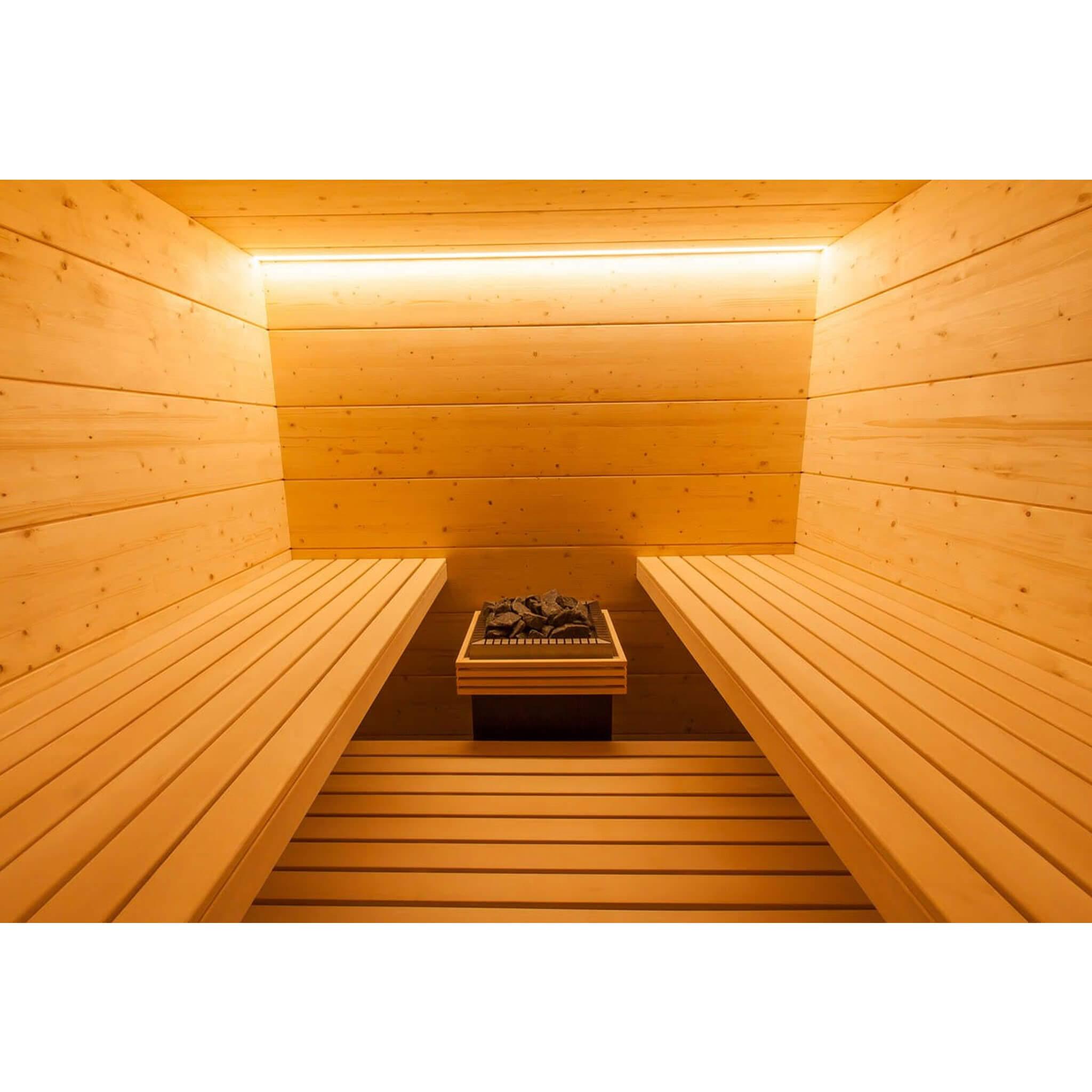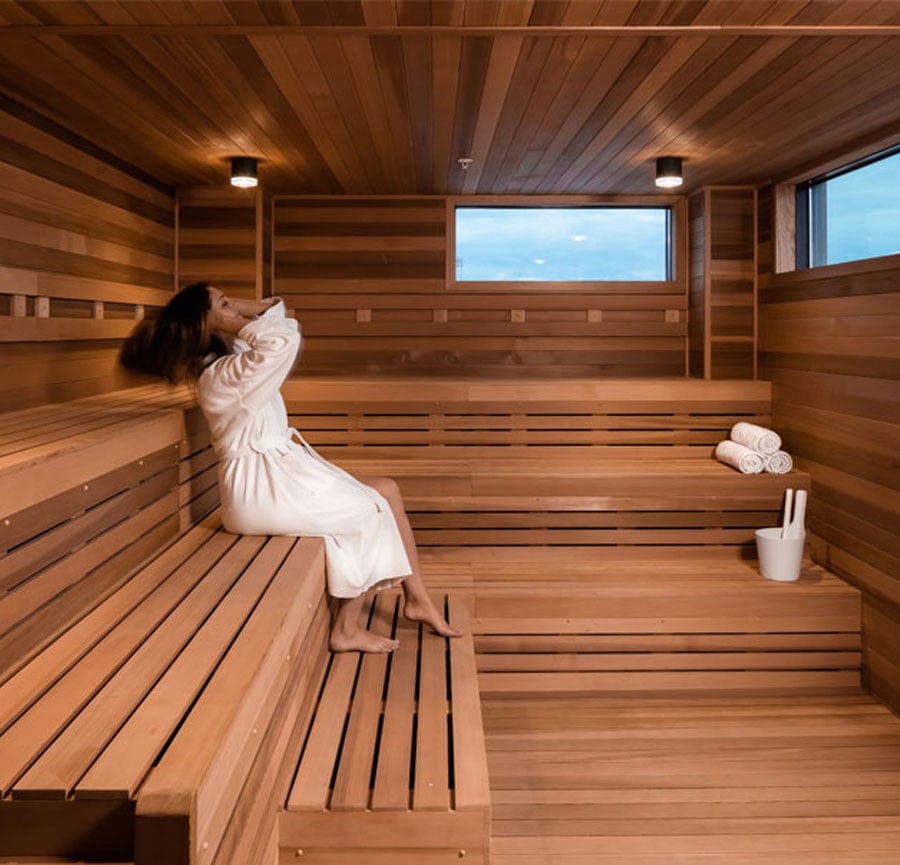All About Traditional Sauna
All About Traditional Sauna
Blog Article
About Traditional Sauna
Table of ContentsWhat Does Traditional Sauna Do?Traditional Sauna Fundamentals ExplainedThe Best Strategy To Use For Traditional SaunaTraditional Sauna for BeginnersFacts About Traditional Sauna Uncovered
The majority of the weight shed in a sauna is water loss and is re-gained upon rehydrating. Without a question sauna can be an essential part of a healthy weight loss program. To consider the distinctions between traditional and IR saunas, I will certainly separate these into proven, theoretical, and produced differences.Therefore, the best point in the saunawhich is at the ceiling straight over the sauna heateris generally between 185 and 190 F. Claims that a traditional sauna goes beyond 200 F is merely not true and not suitable for electrical saunas sold in the United States. The temperature level for a far-infrared sauna is generally set between 120 and 140 F; nevertheless, unlike the typical sauna, the goal in and IR room is not to accomplish a heat.
Because of this, the temperature level distinction is practically unnecessary, considering that profuse sweating causes both sauna kinds, yet the technique of heating up the body is various. In an IR sauna the bather will certainly really feel hot and will sweat a lot, but at a lot reduced temperatures (Traditional Sauna). Thus, if the objective is to spend longer time periods in the sauna, the IR sauna is a good choice
When a traditional sauna has been effectively heated up, the sauna walls are warm, the air temperature level has accomplished established temperature and the rocks are extremely heated. As a fascinating side note, the warmed walls and the rocks are discharging far-infrared heat, combined with the heated air, to develop an "enveloping warm".
Traditional Sauna for Dummies

When the high temperature level is achieved, the aspects cycle on and off to maintain the heat. Many standard sauna individuals take pleasure in putting water over the rocks to develop vapor to increase sauna moisture levels. The advantages of putting water over the rocks include: making the room much more comfortable, dampening the nasal flows, and permitting the use of aromatherapy by mixing important oils with the water.

When the power gets in the body, it creates the body temperature to raise and ultimately causes sweating. In an infrared sauna it is necessary for the emitters/heaters to remain on virtually constantly. Considering that there is no mass of rocks to maintain warm, the sauna will cool if the emitters turned off.
As discussed over, the sauna bather in an infrared area wishes to position himself before operating emitters to get optimal take advantage of the warm. The heating time for the 2 spaces can be very various, relying on exactly how the areas are made use of. For a standard sauna, a bather needs to permit 30-40 mins for the room to achieve a desired temperature level and to properly pre-heat the rocks.
The 9-Minute Rule for Traditional Sauna
A well created sauna will typically accomplish a temperature of 150-160 F in regarding 30-40 mins. For hotter temperature levels, the area might need to heat for a longer period. As soon as the area accomplishes set temperature, the heating unit will cycle on and off, usually running regarding 50% of the time. The protected walls and the heated rocks will maintain the room hot and at steady temperatures.

Conventional saunas often tend to be larger (hence utilize more electricity) than infrared saunas, although standard saunas are absolutely readily available in one and two individual sizes too. For a two-person traditional sauna, 5x6 or 5x7 dimension is most popular. The top bench can pleasantly seat two or three individuals and is also long sufficient to lie down throughout the sauna session.
What Does Traditional Sauna Mean?
The ordinary expense per kWH of power in the united state is roughly $0.11, so a 4.5 kW heating unit will certainly set you back about $.50 to compete one hour, if the heater runs continuously for one hour. Commonly a sauna heater will run for 75% of the very first hour and 50% of succeeding hours on given that the components cycle once the established temperature is achieved.

There is a rarely gone over distinction in the social experience in between the two areas. While our culture has actually shed some of the social advantage of the typical sauna experience, it can be extremely socially satisfying (Traditional Sauna). From family time in the sauna, to heart-felt discussions with better halves, to sauna partiesthe conventional sauna experience can lead to intimate interacting socially
All about Traditional Sauna
A lot of greater end infrared areas consist of tinted light therapy, noise systems and full-glass fronts.
Report this page